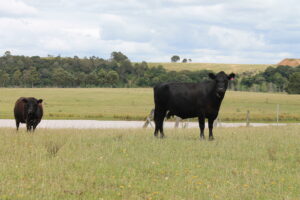Pork is the traditional staple animal protein of China, and its price exerts considerable influence upon Chinese demand for imported meats such as beef and sheepmeat. Now the scourge of African Swine Fever (ASF) is largely behind China, pork prices can also be seen as one of the more visible barometers of the health of a weak Chinese economy- food inflation.
The average price of hogs across 14 key Chinese cities has fallen close to 11% from the peak level of 28 yuan/kg set in mid-October. However, looking back over the past 13 months the rally of hog prices has been incredibly steep, skyrocketing around 17yuan/kg, or 150% from 11 yuan/kg in early October 2021. Examining figure 1, we can see that the majority of the price surge has occurred over the past five months.
Compared to the extreme highs of 2020 when hog prices spiralled into eyewatering 40yuan/kg territory, Chinese pigs seem relatively cheap by comparison. However, the reasons behind the recent surge are fundamentally different. In 202 it was the extreme supply squeeze caused by African Swine Fever (ASF) that drove the price rally. In 2022, the ramp up in price could represent something more concerning to the Australian beef export market- a weakened economy marred by inflation in the food sector. However, bear in mind that official CPI data indicates that general Chinese inflation is only running at 2.1%.
As with any animal protein, livestock price trends eventually flow through to consumer prices for the final cuts of meat. According to the finance data service -Wind, pork prices in China have lifted by more than 50% compared to September 2021, reaching an average of 31 Yuan/kg. This is the highest level seen since May 2021; representing a 17-month high.
Chinese authorities have reacted by releasing centrally reserved frozen pork from government stores over five times in an attempt to quell inflation. In addition, China’s core economic planning body, the National Development and Reform Commission (NDRC) has ordered China’s domestic hog producers to assist in the stabilisation of prices by releasing more live hogs onto the market.
The Chinese economy is showing signs of weakness, with published youth unemployment sitting at over 18%, which endangers social stability, flagging consumer demand, and weak business confidence. Of high significance is weakness in the property sector investment, which in its heyday was thought to account for around 20% of growth- nowadays, in the post Evergrande crisis world, its contribution is falling, with investment and activity dropping. CEIC data indicates a 40% fall in construction over the past year. (figure 2). More broadly, the IMF estimates Chinese GDP growth to only reach 3.2% in 2022, compared to the 8.1% achieved over 2021.
While China has recently taken steps to relax its COVID quarantine rules, cases have surged again to levels close to those seen in April, when lockdown restrictions were at fever pitch. (figure 3) David Fyfe, Chief economist from Argus has pointed out that given this recent rise, it’s likely that COVID policy enforcement will continue to take a toll on the Chinese economy for a while to come, with one of the facilitators of economic activity- human movement through transport steadily plunging throughout 2022, likely to have a heavy impact on tourism and foodservice. In the past, home cooking during COVID was the saviour of beef demand, but we have seen recent signs that Chinese interest in imports of premium beef from both here and the US are already flagging.
What does it mean?
The elevated cost of pork in China is a double-edged sword that cuts both ways for Australian beef producers. On one hand, high pork prices, combined with the tailwind of our weakened dollar are making Aussie beef look comparatively cheaper.
On the flip side, the elevated pork price is also one of many indications of a Chinese economy in trouble, which may be eating into overall imported beef demand, especially for premium-priced Australian product.
Have any questions or comments?
Key Points
- Chinese hog prices have risen 150% in the last year.
- Chinese pork prices have followed the surge, prompting government intervention to quell inflation.
- Food inflation is another sign of a Chinese economy in trouble. Chinese GDP growth in 2022 is forecast at 3.2%, down from 8.1% in 2021.
- The drag of China’s Zero-Covid Policy on its economy is unlikely to cease anytime soon, as cases rise.
Click on figure to expand
Click on figure to expand
Data sources: South China Morning Post, Refinitiv, Oxford uni, Argus media, China NBS
















